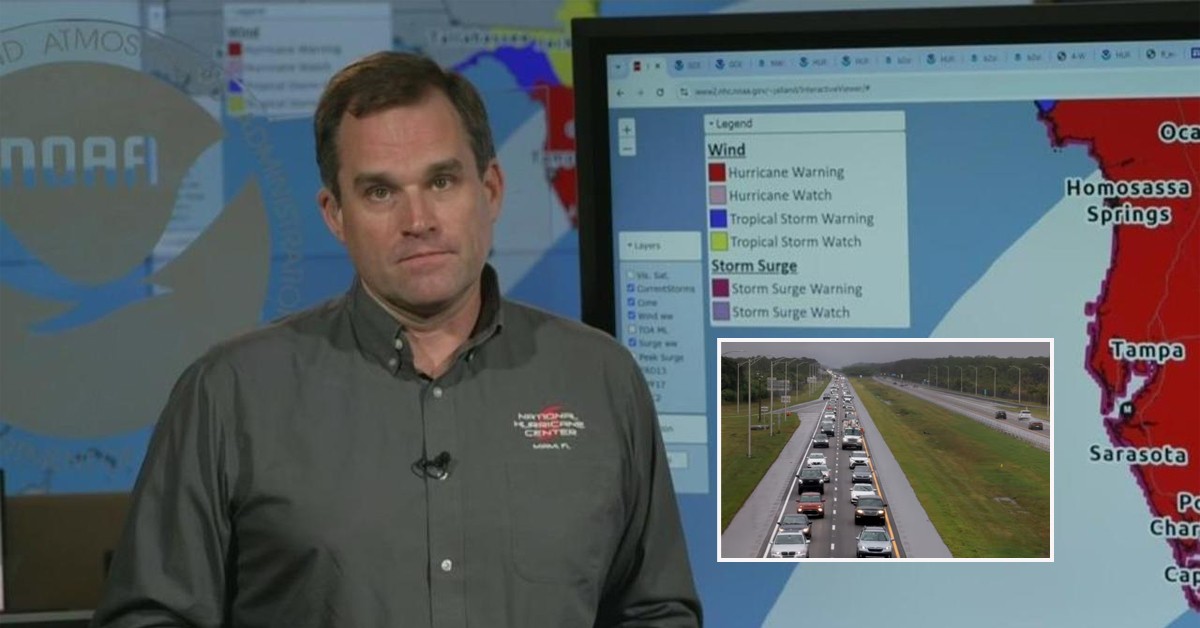The impacts from Hurricane Milton will range from disruptive to deadly. Disruptive weather generally means you can stay home, and if you use common sense, you'll be okay. But if extreme conditions are possible in your area, like where Gulf or ocean water might rise to an unsurvivable level, you have to leave. Now. Immediately. There is nothing to be confused about here. There are warnings for seawater rise (storm surge), wind (hurricane or tropical storm warnings), and flooding from heavy rain.

All of the hazards are dangerous, but storm surge is the one that kills the most people in a Florida hurricane. Yes, you might have "been through hurricanes before." But you weren't through the 1921 storm that put water over much of Pinellas County, or the 1848 hurricane that put 15 feet of Gulf water where downtown Tampa is today. Before Hurricane Ian hit Southwest Florida, some people got confused, ended up making terrible decisions, and died. Don't let that happen to you.
Hurricane Milton put on a stunning display of intensification yesterday. Few storms in modern times have intensified as quickly or become as strong. The eye diameter shrunk to less than 5 miles across. Like a figure skater pulling in her arms to spin faster, the hurricane's peak winds jumped to 180 mph. Subsequently, internal processes caused a large eye to develop (like the skater's arms extending out), and the top wind number dropped to a Category 4. In addition, the storm grew in size as a new eye structure formed.
In spite of the drop in wind speed, none of this is good news for the West Coast of Florida. Tomorrow, Milton will turn north in the direction of west-central Florida – in the general direction of Tampa Bay. At the same time, the dip and the jet stream that is directing it north will drive the storm into a band of strong upper winds and dry air. That hostile environment should weaken Milton further, but also spread the strong winds farther from the center. The storm is forecast to more than double in size before it reaches the coast.

The storm's size is a bigger factor in generating storm surge than the peak wind speed. This is why Storm Surge Warnings are in effect for the entire West Coast of Florida, and the threat of the Gulf water being pushed to deadly levels is so real. The National Hurricane Center is predicting up to 15 feet of storm surge could inundate areas in and around Tampa Bay and down the Gulf coast to Englewood. If that prediction comes true, the high tide will be 15 feet above normal – unsurvivable. Predictions in and around the Fort Myers area are for up to 10 feet above normal.
These forecasts don't imply that the entire area will receive that level of storm surge but that somewhere in those forecast zones, the water will reach those levels if the maximum surge comes in at high tide. If the center of Milton's circulation passes over or just north of Tampa Bay, there could be a double surge. First, the winds on the right side of the circulation would push the water into the bay. But after the center moves inland, the backside of the storm could also push water into the bay. In addition, the changing wind direction would flood one side of the bay and then the other.
A track just north of the city presents a series of extraordinarily dangerous scenarios. Evacuations are ordered to be sure that people aren't in areas that could be inundated with wind-driven Gulf water. If you're in an evacuation zone and you don't leave, you're taking a risk. Nobody can rescue you if you find out too late that you made a mistake. Once Milton crosses the state, the winds on the north side will come off the Atlantic and drive storm surge back toward the Florida, Georgia, and South Carolina coast, which will likely flood into harbors and inlets, including down the St. Johns River.

